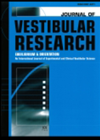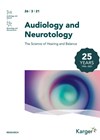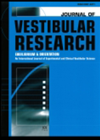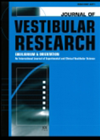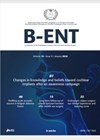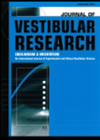
Journal Reviews
Effect of COVID-19 on hearing and balance
Rhinological symptoms are cardinal features of COVID-19. However there have only been anecdotal reports on the involvement of the ear, the closest neighbour to the nose and throat. The aim of this study was ‘to assess the presence of persistent...
The use of repositioning chairs in the diagnosis and treatment of BPPV
The authors performed a systematic review assessing the utilisation of multi-axial repositioning chairs, such as the TRV chair and the Epley Omniax Rotator, in the diagnosis and treatment of BPPV. They reviewed nine studies, of which four were prospective studies....
Semicircular canal dehiscence and cochlear implantation
Semicircular canal dehiscence (SCD) is thought to occur in 3% of the population, it is mostly asymptomatic, but patients may present with sound-induced vestibular symptoms, low-frequency conductive hearing loss, autophony, hyperacusis and aural fulness. With the increasing utilisation of cochlear...
Diagnostic criteria for superior semicircular canal dehiscence syndrome
The latest Bárány Society’s consensus document on diagnostic criteria for vestibular disorders is one for superior semicircular canal dehiscence syndrome (SCDS). There are three major categories: (A) Symptoms consistent with a third mobile labyrinthine window; (B) Physiologic tests – clinical...
PPPD - the problem with the label
The recently described diagnostic entity of persistent postural perceptual dizziness (PPPD) has its merits regarding guiding intervention and treatment, but the label itself can be problematic for patients. This study was designed to determine the views of patients of the...
The vitamin D deficiency and recurrent BPPV debate revisited
The role of calcium metabolism and disorders of bone mineral density in the evolution and recurrence of BPPV has been debated over the years. As a contribution to this debate, the authors undertook a prospective study into the correlation between...
Chronic phase of concussion and stability of gaze
It has been known that vestibular symptoms can persist for several months after concussion. The authors designed this study to assess the effect of chronic concussion (more than one year) on gaze stability and the relationship between deficits in gaze...
A predictor of successful treatment of posterior canal BPPV
Reversal of nystagmus on returning to the upright sitting position from the Hallpike position is a common observation. However, its relevance as a predictor of a successful canal repositioning manoeuvre (CRM) is not known, hence this study. The retrospective study...
The vestibular system is not immune to chronic otitis media
It is well recognised that chronic otitis media (COM) is a risk factor for sensorineural hearing loss. Studies on the effect of COM on vestibular function have been beset by design biases. The authors designed a case control study to...
Impaired vestibulo-ocular reflex (VOR) gain correlates with hearing loss in vestibular schwannoma
The lack of correlation between the size of vestibular schwannoma (VS) and degree of hearing loss and vestibular function tests is well known. In this retrospective study, the focus was on the correlation between VOR gain of semicircular canal function,...
Paediatric idiopathic sudden sensorineural hearing loss
This Turkish retrospective study looked at the radiological and clinical characteristics, prognostic factors and treatment outcomes in children diagnosed with idiopathic sudden sensorineural hearing loss (ISSNHL). Forty-eight children were included over an eight-year period. Complete recovery (CR) was achieved in...
Canal plugging for intractable Meniere’s disease
In this single centre retrospective study, the authors applied semicircular canal plugging, well known as a treatment for refractory BPPV, to intractable unilateral Meniere’s disease (MD) that had failed to respond to medical treatment with betahistine and hydrochlorothiazide. However, in...

